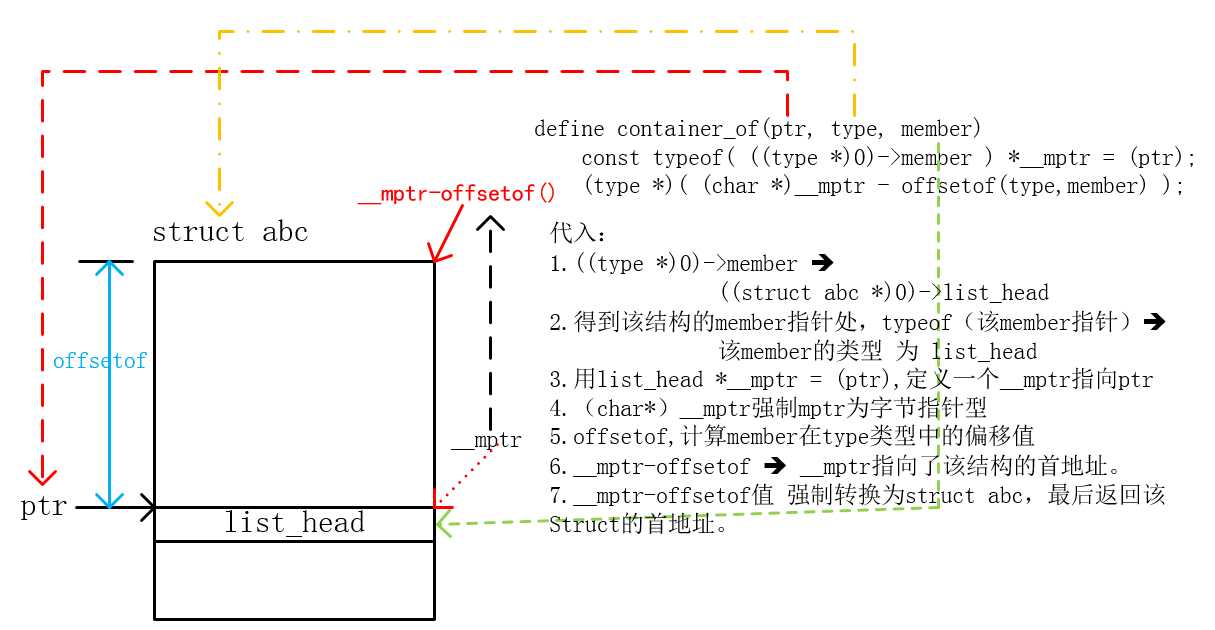标签:
struct list_head{
struct list_head *next,*prev;}
#define LIST_HEAD_INIT(name) {&(name),&(name)}
================================================
1.静态初始化
#define LIST_HEAD(name)
struct list_head name = LIST_HEAD_INIT(name)
=================================================
LIST_HEAD(list_name);
==>
struct list_head list_name = LIST_HEAD_INIT(name);
==>
struct list_head list_name = {&(list_name), &(list_name)};
//相当于给一个结构声明加初始化,让list_name的成员变量
//【next,prev】 = {&(list_name), &(list_name)}
2.运行时初始化
stattic inline void INIT_LIST_HEAD(struct list_head *list)
{
list->next = list;
list->prev = list;
}
static inline int list_empty(const struct list_head* head)
{
return head->next == head;
}
1.插入head后
static inline void list_add(struct list_head* new, struct list_head* head)
{
__list_add(new, head, head->next);
}
2.插入head->prev后
static inline void list_add_tail(struct list_head* new, struct list_head* head)
{
__list_add(new, head->prev, head);
}
static inline void list_replace_init(struct list_head *old, struct list_head *new)
{
list_replace(old,new);
INIT_LIST_HEAD(old);
}
#define list_entry(ptr, type, member) container_of(ptr, type, member)
#define container_of(ptr, type, member) { const typeof( ((type *)0)->member ) *__mptr = (ptr); (type *)( (char *)__mptr - offsetof(type,member) ); }
#define offsetof(TYPE, MEMBER) ((size_t) &((TYPE *)0)->MEMBER)

注意:为什么能这么实现,跟C语言特性很有关系,在C中,给定的结构中,成员的偏移在编译时被固定下来了。
遍历链表:
宏:list_for_each()
#define list_for_each(pos, head) for (pos = (head)->next, prefetch(pos->next); pos != (head); pos = pos->next, prefetch(pos->next))
pos是迭代指针,指向当前访问的链表头。
head是要访问的链表的链表头。
结合list_entry使用,就可以访问链表头所在元素了。
list_for_each(p,&elem_list){
f = list_entry(p, struct elem, list);
}
更简单使用:
宏:list_for_each_entry(pos,head,member)
标签:
原文地址:http://www.cnblogs.com/jsgnadsj/p/5173562.html